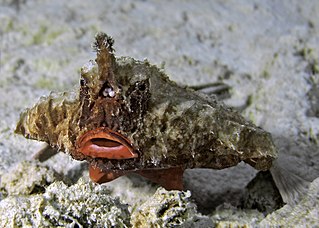
Product
Introducing Socket Scanning for OpenVSX Extensions
Socket now scans OpenVSX extensions, giving teams early detection of risky behaviors, hidden capabilities, and supply chain threats in developer tools.
@mapbox/batfish
Advanced tools
A static-site generator powered by React and Webpack.

<head>docs/q-and-a.mddocs/configuration.mddocs/advanced-usage.mddocs/batfish-modules.mddocs/cli.mddocs/node-api.mdBatfish aims to provide the essentials for building excellent static websites with React and Webpack.
You will need:
If you're not sure if your Node and NPM versions are up to date, run nvm use before installing dependencies. If you don't have NVM installed, you can find installation instructions here.
Besides installing this package, you'll want to do a few things:
npm install --save react react-dom react-helmet
_batfish* to your .gitignore, and maybe other ignore files (e.g. .eslintignore).
Batfish generates files and puts them in _batfish_site and _batfish_tmp.npm install --save @mapbox/batfish
You should not install the Batfish CLI globally.
Install Batfish as an npm dependency for your project, then use the CLI via npm "scripts", npx, or node_modules/.bin/batfish.
The easiest way to do this is to set up npm scripts in package.json, like so:
"scripts": {
"start": "batfish start",
"build": "batfish build",
"serve-static": "batfish serve-static"
}
Then run npm run start, npm run build, and npm run serve-static, as needed.
The bare minimum to get started with Batfish.
Install Batfish and its peer dependencies.
npm install --save @mapbox/batfish react react-dom react-helmet
Create 3 new scripts in your package.json:
"start": "batfish start",
"build": "batfish build",
"serve-static": "batfish serve-static",
Create your first page file at src/pages/index.js.
Export from that page file a React component that renders something. Maybe something like this:
import React from 'react';
export default class Home extends React.Component {
render() {
return (
<div>Hello world</div>
);
}
}
Run npm run start.
Open the URL printed in your terminal.
Build your website.
When you're ready to deploy, run npm run build to build the site for production, then npm run serve-static to check out the production site, which was written to _batfish_site/.
Put your _batfish_site/ directory on the Internet.
If you need to add configuration, create a batfish.config.js module in your project root.
See "Configuration".
Look at examples/basic/ for a simple example project.
Look at examples/no-config/ for a project with no configuration.
Or examples/miscellany/, for a more advanced example project.
By default, all Batfish CLI commands look for batfish.config.js at the root of your project.
It should export a function that returns your configuration object.
For example:
module.exports = () => {
return {
siteBasePath: '/my/site/base/path',
siteOrigin: 'https://www.mydomain.com'
// Add more configuration options here ...
};
}
See docs/configuration.md to learn about all the ways you can configure Batfish.
The CLI has the following commands:
start: Start a development server and watch files for changes, rebuilding and refreshing as needed.build: Build the static site.serve-static: Serve the static site.write-babelrc: Write a .babelrc file that other processes, like your test runner, can use.All commands will look for your configuration module in the current working directory or where you point with the --config option.
For more details, run batfish --help or see docs/cli.md.
You should not install the Batfish CLI globally.
Install Batfish as an npm dependency and use the CLI via npm "scripts", npx, or node_modules/.bin/batfish.
Usually you should use the Batfish CLI. But for those special cases when you want absolute control within a Node process, all the CLI's functionality is available in a Node API.
See docs/node-api.md.
The structure of your pagesDirectory determines the URLs of your site.
JavaScript (.js) and Markdown (.md) files map directly to corresponding URLs.
So src/pages/industries/real-estate.js corresponds to the URL /industries/real-estate/,
and src/pages/about/index.md corresponds to the URL /about/.
When a page is rendered, its component is passed the following props:
location: The browser's current Location.
(During the static build, this will only include the pathname property.)frontMatter: The page's parsed front matter (parsed by gray-matter).JS pages must export a React component with either export default (ES2015 modules) or module.exports (Node.js modules).
JS pages can include front matter within block comments, delimited by /*--- and ---*/.
For example:
/*---
title: Power tie catalog
---*/
import React from 'react';
export default class PowerTiePage extends React.PureComponent {
render() {
return (
<div>
<h1>{this.props.frontMatter.title}</h1>
<p>Content forthcoming ...</p>
</div>
);
}
}
Markdown pages can include front matter delimited by ---.
These files are interpreted as jsxtreme-markdown, so the Markdown text can include interpolated JS expressions and JSX elements! They are transformed into React components.
All the props for the page (e.g. frontMatter, location) are available on props, e.g. props.frontMatter.title.
For example:
---
title: Power tie catalog
---
# {{ props.frontMatter.title }}
Content forthcoming ...
If you haven't seen jsxtreme-markdown before, try it out online.
You need a wrapper component for each of your Markdown pages.
You can specify a site-wide default wrapper, and also wrappers for specific Markdown pages.
The wrapper component should be a React component (the default export of its module) which accepts the page's props and renders the Markdown content as {this.props.children}.
Because it will receive the page's front matter as this.props.frontMatter, you can use front matter to fill out different parts of the wrapper (just like a Jekyll layout).
Example:
// blog-post-wrapper.js
import React from 'react';
import { MyPageShell } from './my-page-shell';
export default class BlogPostWrapper extends React.PureComponent {
render() {
const { frontMatter } = this.props;
return (
<MyPageShell>
<h1>{frontMatter.title}</h1>
<p>
<strong>Summary:</strong> {frontMatter.summary}
</p>
<p>
Posted on {frontMatter.date}
</p>
{this.props.children}
</MyPageShell>
);
}
}
---
wrapper: '../path/to/blog-post-wrapper'
title: Today I cleaned my refrigerator
summary: You can't put off your responsibilities forever, and refrigerators do not clean themselves. So I cleaned my refrigerator.
date: January 7, 2016
---
## Why did I do it
Things had started to smell ...
## How did I do it
I love shopping for cleaning supplies ...
The front matter passed to Markdown wrapper components is augmented with a headings field, which contains an array of data about the headings in the Markdown.
This data includes slugs that correspond to id attributes automatically added to the heading elements; so you can use this to generate a table of contents.
(Read more in "Generating tables of contents for Markdown pages".)
See examples/miscellany/ and examples/table-of-contents/ to learn more about what's possible with Markdown wrappers.
In jsxtreme-markdown components, you can specify JS modules to import and use within the interpolated code using prependJs front matter.
List lines of import or require statements that define variables you can use in your interpolated JS and JSX.
By default, the following lines are always specified:
import prefixUrl from '@mapbox/batfish/modules/prefix-url': See Prefixing URLs.import routeTo from '@mapbox/batfish/modules/route-to'): See docs for the route-to module.This means that those functions can be used with no additional configuration. Import your own modules and do more things.
Example:
---
prependJs:
- "import { myDateFormatter } from './path/to/my-date-formatter';"
---
Learn more about [security]({{prefixUrl('/about/security')}}).
Today is {{myDateFormatter('2015-08-21')}}
Sometimes you need to put an asset at a specific URL.
You may want a favicon.ico in the root directory, for example; or a special image for social media <meta> tags on a page.
For this reason, any non-page files within the pagesDirectory are copied directly into the same location during the static build.
When you access these files from pages, though, you need to use root-relative or absolute URLs.
That is, within src/pages/foo/bar.js you cannot access src/pages/foo/bar.jpg as bar.jpg: you need to use /foo/bar.jpg.
You may want to prefix the URLs, also.
Create a custom 404 page by adding 404.js (or 404.md) to the root of your pagesDirectory.
In development, you can expect to see your 404 page by entering an invalid path.
When you build for production, though, your 404 page will need to be handled and rendered by the server.
(If you run your production build locally with serve-static, expect to see Cannot GET /yourInvalidPathHere.)
Batfish builds you a minimal client-side router with Webpack bundle splitting by page.
You can use regular <a> elements throughout your site.
When the user clicks a link, Batfish checks to see if the link's href refers to a page it knows about.
If so, client-side routing is used.
If not, the link behaves normally.
If you would like to use an <a> without this link-hijacking (e.g. for your own internal routing within a page), you can give it (or one of its ancestor elements) the attribute data-batfish-no-hijack.
This is all accomplished with link-hijacker.
To prefix URLs with your siteBasePath and siteOrigin configuration options, use the prefix-url module.
To change pages programmatically, with JavaScript, use the route-to module.
Add stylesheets to your site with the stylesheets configuration option.
List all your stylesheets, URLs or filepaths, in the order you'd like, and Batfish will concatenate them together and add them to the build.
You can also pass them through whatever PostCSS plugins you'd like, with the postcssPlugins configuration option.
During the static build, each page has its relevant CSS injected inline, and the complete stylesheet is loaded lazily, after the rest of the page is rendered. This optimization ensures that the loading of an external stylesheet does not block rendering, and your page content is visible as quickly as possible. (This is accomplished with postcss-html-filter.)
Assets referenced by url()s in your stylesheets will be hashed and copied to Batfish's outputDirectory.
You can also add page-specific CSS (processed through the same PostCSS pipeline), if you find yourself adding lots of CSS rules that are not used on multiple pages. Read more about "Page-specific CSS".
If you want to bypass this CSS system and use your own, just do it.
You can use the webpackLoaders and webpackPlugins configuration options to do whatever you need.
(Curious or concerned? Check out the Q&A entries about CSS.)
<head>Use react-helmet to add things the document <head>, (e.g. <title> and <meta> tags).
Batfish has a peer dependency on react-helmet.
You definitely want to use it.
A good pattern is to create a PageShell React component that accepts props that it uses to populate that page's <head>.
The development server (for start and serve-static commands) is a Browsersync server, which provides a nice experience for cross-device testing.
When you change a file, Webpack will recompile and the browser will automatically refresh.
(Why not hot module reloading? Seemed like more trouble than it's worth. But if you want to help add the feature, please open an issue.)
Additional documentation can be found in docs/advanced-usage.md.
We built Batfish by systematically addressing a set of problems we've had while building websites with React components. We focused first on the problems themselves, trying to develop effective and focused, minimalistic solutions. Sometimes this meant we used a popular tool, like Webpack. Other times we sidestepped a popular tool, like React Router, and opted to build something more fitted to our needs.
As a result, Batfish is smaller and less ambitious than projects like Gatsby and Next.js. It's a thinner wrapper over the underlying tools, not an ecosystem of its own — more of a gateway into existing ecosystems.
Batfish also includes some features that we considered important but are overlooked by similar projects, like powerful Markdown integration and link hijacking. (Though we tried to build such features in such a way that they could be re-used in other contexts. Try jsxtreme-markdown in your Gatsby site!)
Since we use Batfish for vital projects, we prioritize the needs of end-users (website visitors) and the stability, simplicity, and clarity of the system.
Please let us know what you think!

FAQs
The React-powered static-site generator you didn't know you wanted
The npm package @mapbox/batfish receives a total of 352 weekly downloads. As such, @mapbox/batfish popularity was classified as not popular.
We found that @mapbox/batfish demonstrated a not healthy version release cadence and project activity because the last version was released a year ago. It has 28 open source maintainers collaborating on the project.
Did you know?

Socket for GitHub automatically highlights issues in each pull request and monitors the health of all your open source dependencies. Discover the contents of your packages and block harmful activity before you install or update your dependencies.

Product
Socket now scans OpenVSX extensions, giving teams early detection of risky behaviors, hidden capabilities, and supply chain threats in developer tools.

Product
Bringing supply chain security to the next generation of JavaScript package managers

Product
A safer, faster way to eliminate vulnerabilities without updating dependencies